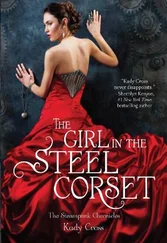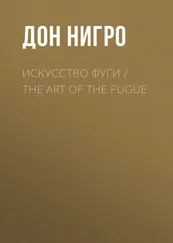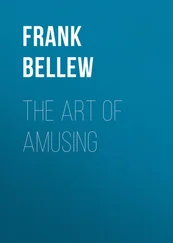Frank Abagnale - The Art of the Steal
Здесь есть возможность читать онлайн «Frank Abagnale - The Art of the Steal» весь текст электронной книги совершенно бесплатно (целиком полную версию без сокращений). В некоторых случаях можно слушать аудио, скачать через торрент в формате fb2 и присутствует краткое содержание. Год выпуска: 2001, ISBN: 2001, Издательство: Broadway Books, Жанр: Старинная литература, на английском языке. Описание произведения, (предисловие) а так же отзывы посетителей доступны на портале библиотеки ЛибКат.
- Название:The Art of the Steal
- Автор:
- Издательство:Broadway Books
- Жанр:
- Год:2001
- ISBN:9780767910910
- Рейтинг книги:4 / 5. Голосов: 1
-
Избранное:Добавить в избранное
- Отзывы:
-
Ваша оценка:
- 80
- 1
- 2
- 3
- 4
- 5
The Art of the Steal: краткое содержание, описание и аннотация
Предлагаем к чтению аннотацию, описание, краткое содержание или предисловие (зависит от того, что написал сам автор книги «The Art of the Steal»). Если вы не нашли необходимую информацию о книге — напишите в комментариях, мы постараемся отыскать её.
The Art of the Steal — читать онлайн бесплатно полную книгу (весь текст) целиком
Ниже представлен текст книги, разбитый по страницам. Система сохранения места последней прочитанной страницы, позволяет с удобством читать онлайн бесплатно книгу «The Art of the Steal», без необходимости каждый раз заново искать на чём Вы остановились. Поставьте закладку, и сможете в любой момент перейти на страницу, на которой закончили чтение.
Интервал:
Закладка:
A criminal always looks for the easiest path to riches. At my house, I have a security camera and security system, and after dark the place lights up like Yankee Stadium. A burglar takes one look at my house and heads to the next block. It’s the same thing with a forger or a con artist. He’ll search for the easy mark. So let’s learn how to keep it from being you.
2
[LOOKING FOR
MR. GOODCHECK]
Afew years ago, a man double-parked his rental car in Miami and was given a parking ticket. He was from Argentina, visiting on vacation. He stuck the parking ticket in his briefcase and it went back with him to Argentina. While he was unpacking his luggage, he came across the ticket. The fine was twenty dollars. He searched around in his pockets and found that he still had some leftover U.S. currency. He stuffed a twenty-dollar bill and two singles in the envelope along with the ticket, sealed it, and mailed it to the Miami city clerk.
When the city clerk opened the envelope, he noted that the man had overpaid by $2.00. Instead of sending him the $2.00 back, the city mailed him a check for $2.00. When the man opened the envelope and found the check, he thought it was too good to be true. He took that check, scanned it into his computer and changed the amount to what he deemed was a more appreciative refund—$1.45 million. He printed out the corrected check and deposited it in a bank in Argentina. The city of Miami dispenses many checks for more than $1 million, and so it was paid without question. Because we don’t have extradition rights with Argentina, the man got away with it. He became a millionaire from a twenty-dollar parking ticket.
Since he was never caught, I can only speculate on the actual mindset of the Argentinian. But I happen to think the guy was doing this little caper as a lark, just to see if he could get away with it. Obviously, since he knew the mechanics of how to forge a check, he had to be at least a little bit crooked. But I sort of doubt that he ever imagined he could succeed at something so outrageous; he just couldn’t believe that forgery had become so easy.
Oh, but it has.
THE TRULY NOTEWORTHY NEWS
Despite the fact that we read a lot of stories in the newspapers about someone downloading credit card numbers from a website, or manufacturing phony Visa cards in some warehouse in Queens, the truth is, check fraud is much more prevalent. And although the average value of a fraudulent check is less than one thousand dollars, the Office of the Comptroller of the Currency estimates that total check fraud losses exceed $19 billion a year (and if we start giving out more parking tickets it might get a lot worse). Visa and MasterCard losses are less than 10 percent of that. And bank robbers, by contrast, got away with a relatively paltry $68 million in 1999.
Payment by check is far and away the most popular form of payment in the United States, easily exceeding payments by cash and credit card combined. Americans wrote 69 billion checks in 1999, and every year they write a billion more. No one knows that better than criminals. That’s why worthless checks are one of the most serious white-collar crimes affecting businesses today. Every day, American banks, savings banks, and credit unions return 1.3 million worthless checks. That’s $27 million of bad checks, every single day.
But only about 2 percent of bad check passers are arrested, and only about 62 percent of all bad checks are ever collected. And the conviction rate for bad check passers is lamentably low.
A SLIPPERY SLOPE
Things have changed so much since my days as a check forger. Years ago, when a forger came to a city, there was a great deal of preparation involved if he wanted to forge checks. First, he would have to rent an apartment to establish a physical address. He’d try to find a place he could rent by the month so he wouldn’t have to bother with a lease. Still, he’d have to pay the first month’s rent along with a security deposit.
Then he’d go down to the County Bureau of Vital Statistics and search through the death records for the year of his birth. He’d find an infant who was born around when he was born and died shortly afterward. He’d copy the vital information off the infant’s death certificate—the mother’s name, the father’s name, and so forth. Armed with this information, he could apply for a birth certificate. After he got the certificate, he’d go down to the Motor Vehicles Department and get a driver’s license. Then he’d go to the bank and open an account. That was the risky part, because he had to identify himself to the teller to fill out a new account card and a signature card. Then he had to wait ten days for checks to be printed up. That gave the bank ten days to run a credit bureau report, ten days to check on where he said he was employed, and ten days to contact his previous bank to see how he maintained his account.
None of this is necessary today. You just buy your checks through TV Guide, one of the Sunday magazines you find in newspapers, or over the telephone. Anybody can order anybody’s checks. We’ve made it so easy for people to steal from us. In fact, we’re the only country in the world that does make it so easy. In every other country, you have to pick up your checks at the bank. In Australia, for instance, if you want to reorder checks, you have to physically go to your bank branch and place the order. When the checks arrive, you have to return to the bank and get them. Only recently have a few banks in Australia begun to entertain the idea of mailing reordered checks to customers.
This whole notion of ordering checks directly from vendors started in an entirely innocent fashion. About fifteen years ago, a woman in Colorado Springs, Colo., named Miriam Loo had a greeting card and gift company called Current, which she started in the basement of her home. She had the idea of selling novelty checks, personal checks with special designs on them. She began with dogs. There were so many dog-crazed people, she figured they’d get a kick out of putting their dog on their checks. Sure enough, orders flowed in for checks with Beagles and Cocker Spaniels. Then she expanded beyond dogs into sailboats, cars, birds, flowers, whatever you wanted. It was a nice little business.
The DeLuxe Corporation in Minneapolis, the king of checks, found out about this and said, hey, she’s encroaching on our turf. DeLuxe went and bought her company and entered the personal check business. At first, DeLuxe sold only to banks. Then it began to sell directly to individuals by mail. Banks didn’t like the idea, but DeLuxe didn’t back off. The three other check companies said, well, we’d never do that. But one by one, they entered the business. Since the late 1980s, advertisements like this have appeared in newspapers and in direct mail: “Get two hundred checks for just $3.95. Or get one hundred fifty duplicate checks for only $4.95.” There are more than 200 companies that sell checks through magazines and the Internet. And there are no controls over them. It’s all perfectly legal.
People can get anyone’s check. All they have to do is see it. Criminals nowadays will drive around until they find a ritzy neighborhood with million-dollar homes. They’ll knock on a door. When someone answers, they’ll say, “Boy, you’ve got a lot of leaves lying on your lawn. What’d you got, an acre here? I’ll tell you what, my buddy and I will clean up your leaves, leave the place immaculate, and it’ll cost you just seventy-five dollars.” The guy thinks it’s a great deal, the crooks clean up the leaves, and the owner pays them with a check for seventy-five dollars. That’s all they came for: the check. Then they go to the Internet and order the checks of a guy from a million-dollar home, forge them, and start cashing them. Next time, the guy will rake his own leaves.
Читать дальшеИнтервал:
Закладка:
Похожие книги на «The Art of the Steal»
Представляем Вашему вниманию похожие книги на «The Art of the Steal» списком для выбора. Мы отобрали схожую по названию и смыслу литературу в надежде предоставить читателям больше вариантов отыскать новые, интересные, ещё непрочитанные произведения.
Обсуждение, отзывы о книге «The Art of the Steal» и просто собственные мнения читателей. Оставьте ваши комментарии, напишите, что Вы думаете о произведении, его смысле или главных героях. Укажите что конкретно понравилось, а что нет, и почему Вы так считаете.












